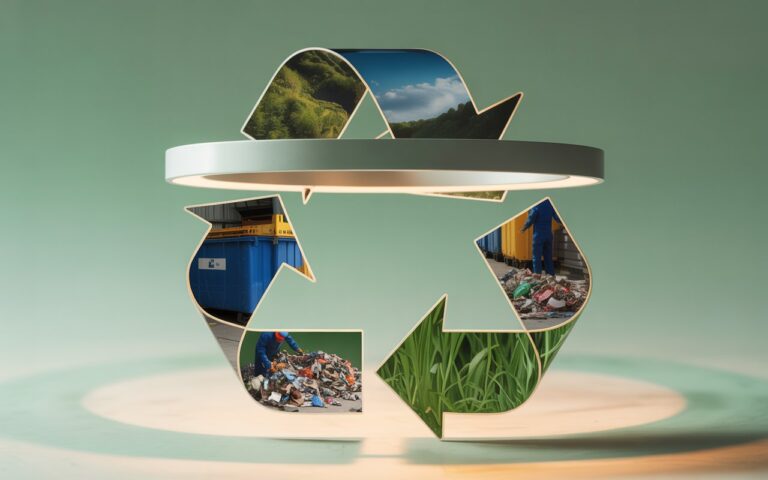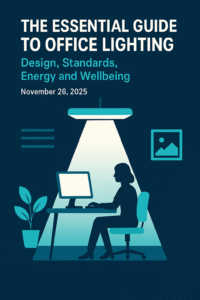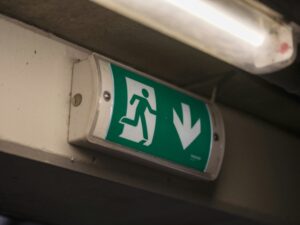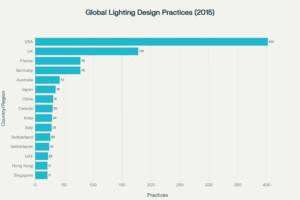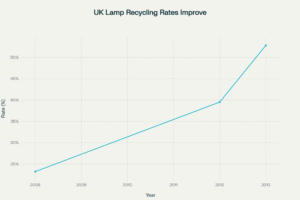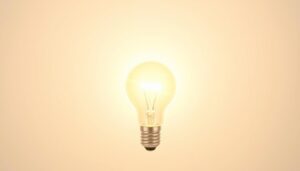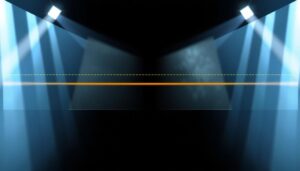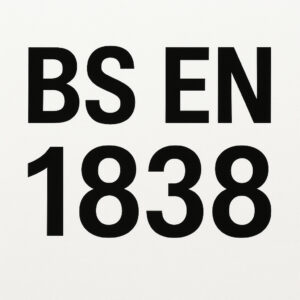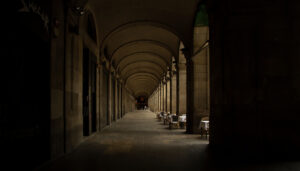The lighting industry stands at a critical crossroads – a linear path on one side and a circular one on the other.
While LED technology has transformed energy efficiency, a less visible crisis looms: 29 million LED, solar and decorative lights end up in UK landfills annually, taking with them critical raw materials worth millions.
Yet this challenge presents an unprecedented opportunity to reimagine how we design, use, and recover lighting products through circular economy principles.
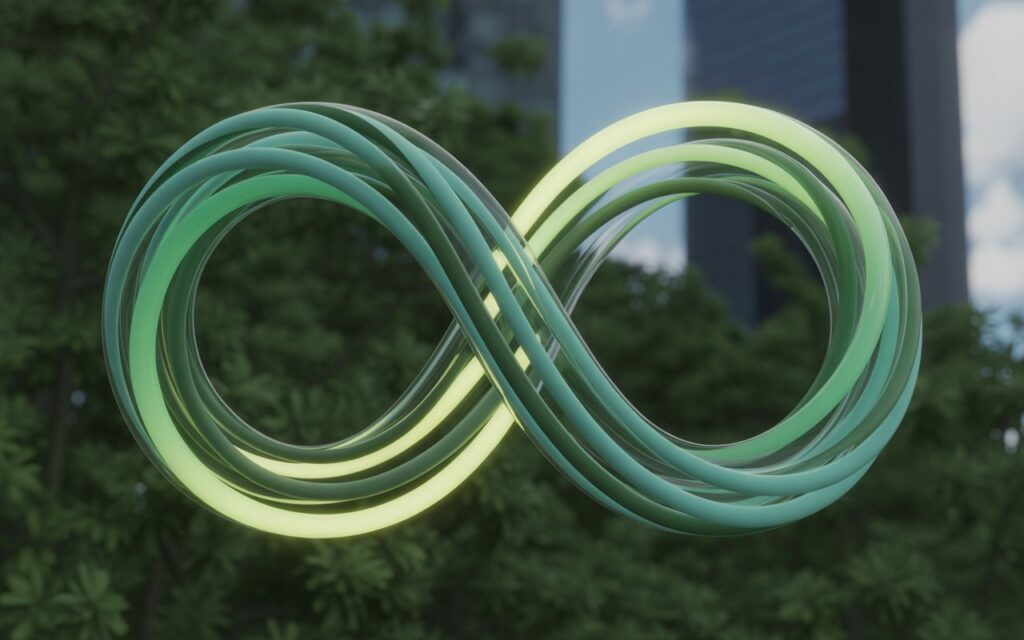
The Hidden Cost of Linear Lighting Economy
The traditional “take-make-dispose” model of lighting has created a sustainability crisis hiding in plain sight.
According to Material Focus’s comprehensive UK e-waste tracking data, 1.45 million tonnes of electrical waste becomes available for reuse or recycling each year, yet 500,000 tonnes disappear into residual waste streams.
For the lighting sector specifically, this wastage translates into £13.6 million worth of critical materials lost annually due to inadequate recovery infrastructure—even as £148 million worth is successfully recovered.
This isn’t simply an environmental issue, but an economic one. The UK lighting market is forecast to reach £2.3 billion by 2028, yet the industry continues to lose nearly 10% of its potential material value through inefficient collection and processing systems.
WEEE waste has become one of the fastest growing waste streams in the UK, increasing at a rate three times that of average municipal waste.
As sustainable lighting solutions become increasingly central to achieving net-zero targets—with government spending on street lighting alone reaching £1.07 billion in 2023/24—addressing this circular economy gap has never been more urgent.
Understanding the WEEE Challenge in Lighting
The Waste Electrical and Electronic Equipment (WEEE) regulations were designed to ensure proper disposal and recovery of electronic products, yet lighting presents unique challenges that have resulted in persistently low recovery rates.
The Performance Gap Reality
Official Environment Agency and DEFRA data reveals a striking disparity in recycling performance.
Lamp recycling rates improved marginally from 47.5% in 2015 to 48.5% in 2017—a modest gain that barely reflects the scale of intervention required.
More concerning is the luminaire recycling rate, which crawled from just 7.1% to 7.5% over the same period.
This performance gap highlights a fundamental challenge: while simple lamp components can be relatively easily recycled, complete luminaires—with their complex assemblies of drivers, housings, optics, and control systems—are far more difficult to recover effectively.
Current lighting equipment collection achieved 82% of targets in Q3 2023, but with 2024 targets set at 5,787 tonnes for lighting equipment and 2025 projections dropping to 4,066 tonnes for lamps, the system remains far from optimal.
Why Traditional Recycling Isn’t Enough
Industry research reveals that only 7% of interior lighting is recycled appropriately, with most materials lost to landfill.
This abysmal rate stems from several systemic issues:
- Complex product design that makes disassembly difficult and time-consuming
- Inadequate collection infrastructure with fewer than 10% of lighting WEEE properly collected
- Economic disincentives where recycling costs exceed material recovery value
- Knowledge gaps among installers, facilities managers, and end users about proper disposal
The result?
Valuable materials—aluminum, copper, rare earth elements, and high-grade plastics—are incinerated or buried rather than recirculated into manufacturing supply chains.
For businesses committed to commercial lighting efficiency, understanding these disposal pathways is essential for true sustainability.
The Recolight Success Story: Proving What’s Possible
Against this challenging backdrop, one organization demonstrates that high-performance lighting recovery is achievable.
Recolight, the UK’s specialist lighting WEEE compliance scheme, has recycled over 300 million lamps, LEDs, and luminaires since 2007—more than all other UK WEEE schemes combined.
Operating the most comprehensive network with 3,000+ collection points nationwide, Recolight’s processes achieve 90%+ recovery rates, significantly exceeding the 80% WEEE regulation target. Their material breakdown reveals what effective recovery looks like:
- 80-90% glass recovered and reprocessed
- 7-14% metal returned to manufacturing supply chains
- 7-14% plastic diverted from landfill
- 1-3% fluorescent powder safely managed and recovered
This success proves that with proper infrastructure, expertise, and commitment, the lighting industry can dramatically improve its circular economy performance.
The organisation’s leadership in convening the annual Circular Lighting Live conference demonstrates how the UK lighting sector is increasingly backing its environmental claims with verified data, including Environmental Product Declarations (EPDs) that provide standardised lifecycle assessment information.
Circular Design: Rethinking Luminaires from the Ground Up
Achieving higher recovery rates requires more than better recycling infrastructure—it demands that we fundamentally redesign how luminaires are conceived, manufactured, and assembled.
The Modular Design Revolution
LightingEurope’s white paper on serviceable luminaires provides compelling examples of how design choices impact circularity, showcasing a spectrum from non-serviceable downlights to modular outdoor luminaires with replaceable drivers and LED modules. This modular approach enables:
- Easy maintenance without replacing entire fixtures
- Component-level upgrades to improve performance over time
- Multiple end-of-life routes including reuse, spare parts extraction, and material recycling
- Extended product lifetimes that reduce overall resource consumption
For specifiers and facilities managers focused on intelligent lighting controls, modular systems offer the flexibility to upgrade control technology without replacing entire luminaires.
Measuring Circularity: New Frameworks and Standards
How do we objectively measure whether a luminaire is truly circular? Several new frameworks provide answers:
TM66 Circularity Assessment: Developed by CIBSE’s Society of Light and Lighting, TM66 provides a 1-4 rating scale for luminaire circularity, similar to vehicle NCAP safety ratings. The framework includes CEAM-Make (66 questions for manufacturers) and CEAM-Design (20 questions for specifiers), creating transparency around circular design choices.
Material Circularity Indicator (MCI): The Ellen MacArthur Foundation’s Circularity Indicators Project offers the MCI with values from 0-1, measuring how effectively material flows are restored in technical cycles. This quantitative approach helps manufacturers benchmark progress and identify improvement opportunities.
BS 8887-221:2024: This groundbreaking British Standard provides the first sector-specific guidance for design and disassembly in lighting, establishing best practices that manufacturers can implement across product ranges.
TM65 Embodied Carbon Metrics: CIBSE’s embodied carbon measurement tool enables lighting specifications that account for whole-life carbon impacts, not just operational energy consumption.
Environmental Product Declarations (EPDs): The lighting industry’s product-specific rulebook PSR0014 governs EPDs produced under the PEP Ecopassport methodology, with LightingEurope reporting that its 1,000 member manufacturers are implementing standardised environmental performance documentation based on EN 15804 standards.
These frameworks transform circularity from an abstract concept into measurable, actionable design criteria that can be incorporated into procurement specifications and product development processes.
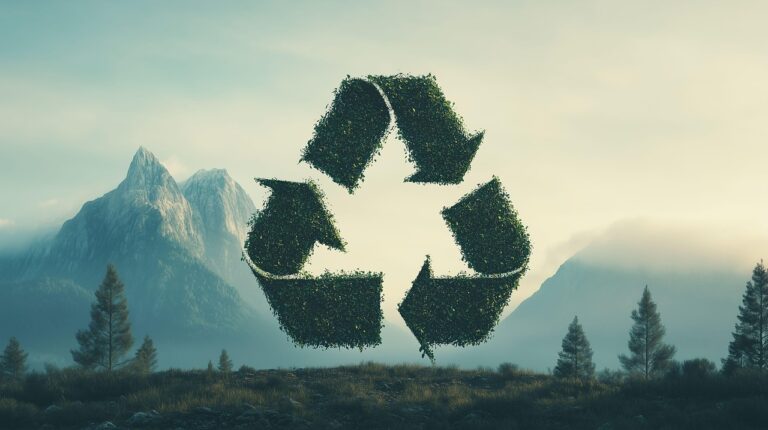
Remanufacturing: The Missing Middle in Lighting’s Circular Economy
Between initial use and final recycling lies a largely untapped opportunity: remanufacturing. Industry research demonstrates that remanufacturing can deliver 40% cost reduction while achieving better-than-new performance—a compelling value proposition for commercial building operators managing large lighting installations.
Why Remanufacturing Makes Economic Sense
Current UK practice sees most end-of-life luminaires either landfilled or, at best, recycled for basic material recovery. Meanwhile, the UK imports new luminaires to replace aging installations. This approach wastes both material value and economic opportunity.
UKRI-funded research into data-driven luminaire remanufacturing supply chains aims to enable the UK lighting industry to remanufacture and upgrade quality luminaires instead of recycling used lights and importing new replacements. The business case is compelling:
- Value retention: Remanufactured luminaires capture 60-80% of original product value versus 5-10% from material recycling
- Performance enhancement: Remanufacturing enables technology upgrades, delivering better-than-original performance
- Cost savings: 40% cost reduction compared to new product purchase makes remanufactured options attractive for budget-conscious projects
- Carbon reduction: Remanufacturing avoids 60-80% of embodied carbon associated with new manufacture
Research by EGG Lighting and Scot Reman found that with collection rates for lighting WEEE recycling below 10%, remanufacturing offers significantly improved value capture compared to traditional recycling pathways. For organizations with aging lighting infrastructure, remanufacturing presents a third option between “make do” and “replace everything.”
The Technology Transition Challenge
Interestingly, LED waste currently represents less than 2% of the lamp stream due to extended lifetimes—a figure that will grow significantly as early LED installations from the 2010s begin reaching end-of-life. This creates a window of opportunity to establish remanufacturing infrastructure before the LED waste wave arrives.
Tamlite Lighting’s remanufacturing white paper demonstrates how forward-thinking manufacturers are already developing take-back and refurbishment programs, positioning themselves to capture value from returning products while reducing customer total cost of ownership.
The Environmental Impact Advantage
Academic studies provide quantified evidence of circular lighting’s environmental benefits. Research shows 60% lower environmental impact for eco-designed LED products compared to commercial alternatives, with 30%+ carbon reduction achievable through modular design strategies.
These figures translate into real-world impact. When a specifier chooses a modular, remanufacturable luminaire over a sealed alternative, they’re not just making a marginal improvement—they’re potentially cutting the product’s lifetime environmental impact by more than half.
The CIRC4Life Project’s life cycle assessment of LED lighting provides granular data on where environmental impacts occur across the product lifecycle, revealing that manufacturing and end-of-life phases often exceed operational energy consumption for long-life LED products. This finding challenges the conventional wisdom that operational efficiency is the only metric that matters, highlighting why whole-life carbon assessment must become standard practice.
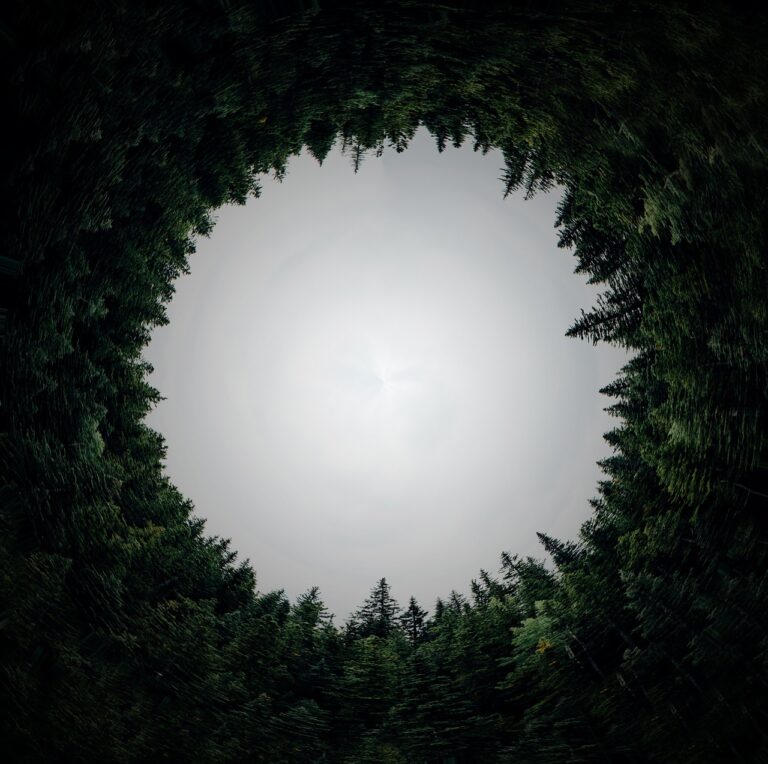
Key Data Sources: The Evidence Base for Circular Lighting
The circular economy transition in lighting is supported by an extensive evidence base spanning industry research, regulatory data, academic studies, and manufacturer case studies. The table below summarizes the most authoritative sources informing circular lighting policy and practice:
| Source | Key Dataset | Primary Use Case | Critical Data Points |
|---|---|---|---|
| Material Focus | UK E-waste Tracking Research | National WEEE waste recovery analysis | 1.45M tonnes e-waste available; 500,000 tonnes lost to residual waste; 29M lights to landfill annually; £148M materials recovered vs £13.6M lost |
| Environment Agency / DEFRA | Official WEEE Performance Data | Regulatory compliance monitoring | Lamp recycling 47.5%→48.5% (2015-2017); Luminaire recycling 7.1%→7.5%; 82% collection target achievement Q3 2023 |
| Recolight | Lighting WEEE Compliance Data | Industry-leading recovery performance | 300M+ units recycled since 2007; 3,000+ collection points; 90%+ recovery rates; 80-90% glass, 7-14% metal, 7-14% plastic recovery |
| LightingEurope | Serviceable Luminaires White Paper | Circular design framework | Design spectrum from non-serviceable to fully modular; PSR0014 EPD rulebook; 1,000 member manufacturers |
| Ellen MacArthur Foundation | Material Circularity Indicator (MCI) | Circularity measurement tool | 0-1 scale measuring material flow restoration in technical cycles |
| CIBSE (TM66) | Luminaire Circularity Assessment | Product rating framework | 1-4 rating scale (NCAP-style); CEAM-Make (66 questions); CEAM-Design (20 questions) |
| CIBSE (TM65) | Embodied Carbon Metrics | Whole-life carbon assessment | Standardised methodology for measuring embodied carbon in lighting specifications |
| BSI (BS 8887-221:2024) | Design for MADE Standard | Design for disassembly guidance | First sector-specific circular economy standard for lighting; maintenance, access, disassembly, end-of-life |
| UK Research and Innovation (UKRI) | Data-Driven Remanufacture | Supply chain innovation | Digital technology enabling remanufacturing vs recycling/imports; value retention research |
| EGG Lighting / Scot Reman | Remanufacturing Economics | Cost-benefit analysis | <10% WEEE collection rate; remanufacturing improves value retention; business case evidence |
| Philips Lighting (Signify) | Pacific LED Case Study | Circular product design exemplar | Modular assembly for easy maintenance; multiple end-of-life routes; upgrade pathways |
| Tamlite Lighting | Remanufacturing White Paper | Industry best practice | 40% cost reduction; better-than-new performance; take-back program models |
| CIRC4Life Project | LED Life Cycle Assessment | Environmental impact analysis | 60% lower impact for eco-designed vs commercial LEDs; manufacturing phase carbon data |
| Academic Studies (Various) | Product Lifecycle Research | Sustainability metrics | 30%+ carbon reduction through modular design; 7% appropriate recycling rate; material loss analysis |
This comprehensive dataset collection provides robust evidence for addressing WEEE waste recovery rates, recycling performance gaps, circular design metrics, and the broader sustainability context of lighting within the UK’s circular economy transition. The convergence of regulatory data (DEFRA, Environment Agency), industry performance (Recolight, Material Focus), design frameworks (TM66, BS 8887-221:2024), and research evidence (UKRI, academic studies) creates a compelling case for systemic change.
Building the Circular Lighting Economy: What Needs to Happen Next
Transitioning from today’s largely linear lighting economy to a truly circular model requires coordinated action across multiple fronts:
For Manufacturers
- Adopt modular design principles enabled by standards like BS 8887-221:2024
- Develop take-back programs and remanufacturing capabilities
- Publish circularity data using frameworks like TM66 and MCI
- Design for disassembly with clearly documented procedures
- Implement EPDs using the lighting industry’s PSR0014 rulebook
For Specifiers and Designers
- Incorporate circularity criteria into procurement specifications
- Use TM66 ratings and embodied carbon data in product selection
- Specify modular systems that enable upgrades and maintenance
- Plan for end-of-life from project inception
- Demand verified environmental performance data through EPDs
For Building Owners and Facilities Managers
- Partner with specialist WEEE schemes like Recolight for proper disposal
- Explore remanufacturing options before defaulting to replacement
- Track and report on lighting waste diversion rates
- Educate maintenance teams on circular economy principles
- Incorporate circular economy performance into sustainability reporting
For Policymakers
- Strengthen WEEE collection targets and enforcement
- Provide incentives for remanufacturing over new manufacture
- Support development of UK-based reprocessing infrastructure
- Mandate circularity reporting in public procurement
- Close regulatory gaps that allow 29 million lights to reach landfill annually
The Road Ahead: From Waste Crisis to Value Opportunity
The lighting industry’s circular economy challenge is significant—29 million units to landfill annually, £13.6 million in lost material value, recycling rates below 50% for lamps and under 8% for luminaires. Yet these figures also represent opportunity.
Every luminaire that’s remanufactured instead of landfilled, every modular design that enables a component upgrade instead of a complete replacement, every kilogram of critical materials recovered instead of buried—these actions compound into systemic change.
Organizations like Recolight prove that 90%+ recovery rates are achievable with proper infrastructure. Standards like TM66 and BS 8887-221:2024 provide frameworks for measuring and improving circularity. Academic research demonstrates that 60% environmental impact reductions are possible through circular design. The UK lighting market’s projected growth to £2.3 billion by 2028 creates economic momentum for circular business models. The knowledge, technology, and economic rationale all exist.
What’s needed now is collective will and coordinated action to build the circular lighting economy. For lighting professionals, building owners, and sustainability managers, the time to engage with circular economy principles isn’t tomorrow—it’s today.
The question isn’t whether the lighting industry will embrace circularity, but how quickly we can make the transition. With £13.6 million in annual material value at stake, 29 million units heading to landfill each year, and WEEE waste growing at three times the rate of average municipal waste, the cost of delay grows with every passing day.
The circular economy revolution in lighting has begun. The evidence base is robust, the frameworks are established, the success stories are proven, and the business case is compelling. Now comes the hard work of implementation—transforming lighting from a disposable commodity into a managed resource within continuous cycles of use, recovery, and renewal.
